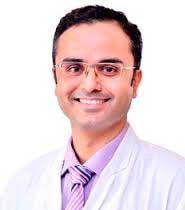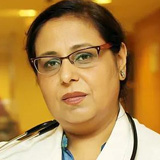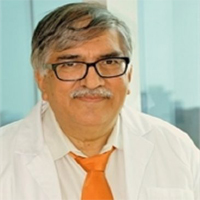Skin Cancer Surgery IN INDIA
Skin cancers are broadly categorized as – Melanoma and other skin cancers (Non-Melanoma).Basal cell carcinoma, squamous cell carcinoma, and melanoma are the three most common kinds of skin cancer. Now, we are going to discuss more about skin cancer surgery and treatment.
Globally, melanoma of the skin is the 17th most widespread cancer. Skin cancer affects men as the 13th most common cancer and women as the 15th. As skin cancer treatment in India progresses, dealing with the rising cases of skin cancer becomes extremely important. According to World cancer research fund international, the year 2020 witnessed an alarming surge in new cases, with over 150,000 individuals being diagnosed with melanoma of the skin.
Skin cancer happens when skin cells grow too much because of sunlight. While sunburns and excessive sun exposure are common triggers, it’s essential to recognize that skin cancer can emerge even in areas less touched by sunlight. Skin cancer, a serious and sometimes dangerous illness, emphasizes the importance of sun protection, early detection, and effective treatment.
Melanoma is the most dangerous type of skin cancer. It comes from cells that give color to your skin. To stop it, it’s good to protect your skin from too much sun. By using protective clothing, and sunscreen, and avoiding tanning beds or lamps, you can limit the risk of skin cancer.
Different Types of Skin Cancer
Skin cancer isn’t a one-size-fits-all condition. It appears in different types, the main four categories of skin cancer are:
- Basal Cell Carcinoma (BCC): Around 80% of skin cancers begin in round cells called basal cells, found in the lower part of the skin. This type of cancer is called BCC and is often seen on the head and neck when there’s too much sun. It doesn’t grow quickly and usually stays where it starts, not spreading to other places in the body.
- Squamous Cell Carcinoma (SCC): About 20% of skin cancers come from flat cells called squamous cells that cover most of the skin. This type is called SCC and happens when the skin gets too much sun or is harmed by burns or chemicals. It can show up in different places on the skin, including lips and scars. Sometimes, it might spread to other parts.
(Basal cell carcinoma and Squamous cell carcinoma are collectively called keratinocyte carcinoma, as they begin from a cell type called keratinocyte).
- Merkel Cell Cancer: Merkel cell cancer is a type of cancer that doesn’t happen a lot and grows quickly. It starts in cells that make hormones and are under the skin and hair roots. It’s usually seen on the head and neck.
- Melanoma: Melanoma, the toughest kind of skin cancer, begins in cells that give color to your skin. It’s not very common, but it’s more harmful, making up only about 1% of skin cancers. Melanoma might show up as a new or changing mole. If an old mole becomes bigger, different in shape, color, or feel, it could be melanoma. You can use the “ABCDE” approach to help figure out if a mole might be melanoma:
- A – Asymmetrical: Cancerous moles aren’t the same on both sides. One half might look different from the other.
- B – Border: The edges of a cancerous mole might be uneven, bumpy, or notched, while a healthy mole has smooth and even edges.
- C – Color change: A cancerous mole can have various colors like tan, brown, black, red, white, or blue. Healthy moles usually have just one color.
- D – Diameter: A cancerous mole tends to be larger than 6 mm, around the size of a small button.
- E – Evolving: Keep watch if a mole changes in size, shape, or texture. Healthy moles usually stay the same.
(There are other rare skin cancers like lymphomas, Kaposi sarcoma, and sarcomas).
Signs and Symptoms of Skin Cancer
- Basal Cell Carcinoma:
- Usually seen on sun-exposed areas of your skin, such as your face and neck.
- Can seem like a shiny lump like wax or a pearl.
- Often appears as a flat mark similar to a scar.
- It might be a sore that scabs, bleeds, and then reappears.
- Squamous Cell Carcinoma:
- Frequently found in places that get sunlight, like your face and hands.
- Could appear as a hard, red bump.
- Might look like a flat spot with a rough, scaly covering.
- Melanoma:
- Might grow anywhere, even in moles you already have.
- Often seen on men’s faces or bodies, as well as women’s lower legs.
- Signs can be a large brown spot with darker spots or a mole that changes.
- Small spots might have a wavy edge and colors like red, pink, or dark blue.
- Painful, itching or burning areas might also be an indication.
- Dark spots on your hands, feet, nails, or inside your mouth could mean something’s not right.
- Less Common Skin Cancers:
- Kaposi sarcoma: Looks like red or purple patches, often in folks with weaker immune systems or specific backgrounds.
- Merkel cell carcinoma: Makes firm lumps, usually on the head and neck.
- Sebaceous gland carcinoma: Forms stiff lumps on the eyelids. Some individuals mistake it for another eye condition.
Risk Factors Associated with Skin Cancer
- Excessive Sun Exposure: Prolonged and unprotected exposure to ultraviolet (UV) radiation from the sun.
- Fair Skin: People with fair skin, light hair, and light-colored eyes are at higher risk due to reduced melanin protection.
- History of Sunburns: Multiple blistering sunburns, especially during childhood.
- Use of Tanning Beds: Artificial UV radiation from tanning beds or lamps.
- Family History: Having a family member with skin cancer.
- Weakened Immune System: Conditions like HIV/AIDS, organ transplantation, or certain medications can weaken the immune system and elevate risk.
- Precancerous Skin Lesions: Certain skin conditions, like actinic keratosis, can progress to cancer over time.
- Moles: Large numbers of moles or unusual moles can indicate a higher risk.
- Age: The risk increases with age, especially after 40.
- Chemical Exposure: Exposure to certain chemicals, like arsenic, can heighten risk.
- Radiation Therapy: Past radiation treatment may increase the risk of skin cancer in the treated area.
Diagnosis of Skin Cancer
The process of diagnosing skin cancer involves a series of careful steps to discover the presence of this condition, including:
- Biopsies: A skin biopsy involves the removal of a small sample of the suspicious skin area. This procedure is typically painless, as the doctor numbs the area before taking the sample. Biopsies not only confirm cancer’s presence but also tell us more about its type and how far it has spread. Different types of biopsies are used:
- Excisional Biopsy: The entire growth is taken out.
- Shave Biopsy: The upper layers of the problem area are shaved off.
- Punch Biopsy: A small, circular piece of the tumor is removed, even from deeper skin layers.
- Imaging tests: They are really important for finding certain skin cancers, especially if they might have spread inside your body. Doctors use methods like CT scans, X-rays, and MRIs to look inside you without any pain or surgery. These tests help doctors see if the cancer has reached other parts like your organs or bones. While some skin cancers mostly stay in one spot, others like melanoma can be more aggressive and might need these tests to see how far they’ve spread. It’s like getting a special picture of what’s happening inside to make sure you get the right treatment.
- Blood Tests: Even though there isn’t a specific blood test to detect skin cancer, other blood tests like the complete blood count can still help. They give important clues about your general health and possible signs of the disease. These tests can also help doctors figure out how advanced the cancer is and check how well the treatment is working.
Skin Cancer Surgery and Treatment Options
Due to progress in medical technology and an expanding network of healthcare centers, India provides a wide array of comprehensive care choices for people diagnosed with skin cancer. Various treatments available are:
- Surgery:
- Excision: The cancerous growth is removed along with a margin of healthy tissue. The cost can range from $135 to $675, depending on the size and location of the tumor.
- Mohs Surgery: Layer-by-layer removal of cancerous tissue while sparing healthy skin. Prices may start from $200 for smaller cases
- Lymph Node Dissection: If cancer has spread, this procedure involves the removal of adjacent lymph nodes.
- Radiation Therapy:
- External Beam Radiation: Targeted radiation is delivered externally to the affected area. The cost per session may range from $40 to $135.
- Brachytherapy: Internal radiation sources are placed near the tumor site.
- Topical Chemotherapy: Creams or lotions containing anticancer drugs are applied to the skin.
- Systemic Chemotherapy: Medications are taken orally or intravenously to target cancer cells throughout the body.
- Immunotherapy:
- Immune Checkpoint Inhibitors: Medicines that assist the immune system in recognizing and attacking cancer cells. Prices can range from $675 to $1350 or more per session.
- Cytokine Therapy: Boosting the immune response through protein-based treatments.
- Targeted Therapy:
- BRAF Inhibitors: Drugs that target specific genetic mutations present in some skin cancers. Prices for targeted therapy can start from $675 per session.
- MEK Inhibitors: Used in combination with BRAF inhibitors for certain cases.
- Photodynamic Therapy (PDT): A light-sensitive medication is applied to the skin and activated with light to destroy cancer cells. PDT costs can range from $135 to $405 per session.
- Cryotherapy: Freezing the cancerous tissue to destroy it.
- Electrochemotherapy: A combination of chemotherapy and electrical pulses to enhance drug absorption.
- Supportive Therapies: Pain management, wound care, and psychological support to improve quality of life.
Best Hospitals for Skin Cancer Treatment in India
Choosing the right skin cancer treatment is influenced by many things. These include the kind of cancer, how far it has spread, where it’s located, your health, and what you’re comfortable with. Your doctors and specialists will talk with you to figure out the best plan. In India, there are really good hospitals in cities like Delhi, Mumbai, and Bangalore that offer great care for skin cancer. They have the best equipment and skilled doctors. They focus on what’s best for you and use advanced methods. India is becoming known for excellent skin cancer care. To make the best decisions, talk to expert doctors and explore your options. You can even look for the best skin cancer hospital in India to get the right treatment for you.
MEDANTA- THE MEDICITY – GURGAON
BLK SUPER SPECIALITY HOSPITAL – NEW DELHI
MAX SUPER SPECIALTY HOSPITAL – NEW DELHI
INDRAPRASTHA APOLLO HOSPITAL – NEW DELHI
KOKILABEN DHIRUBHAI AMBANI HOSPITAL – MUMBAI
JAYPEE HOSPITAL-NOIDA
FORTIS MEMORIAL RESEARCH INSTITUTE (FMRI) – GURGAON
ARTEMIS HOSPITAL – GURGAON
FORTIS HOSPITAL – NOIDA
FORTIS MEMORIAL RESEARCH INSTITUTE – GURGAON
MANIPAL HOSPITAL – BANGALORE
Top Doctors for Skin Cancer Treatment in India
India boasts a unit of top doctors for skin cancer treatment. With deep expertise and advanced techniques, these professionals provide personalized care, guiding patients through diagnosis, treatment planning, and therapies. Dermatologists, oncologists, surgical oncologists, and radiation oncologists are among the key medical specialists involved in skin cancer treatment. These experts work collaboratively to diagnose, plan treatment strategies, and provide comprehensive care to patients.
- Dr. Hitesh Dawar – Max Super Speciality Hospital, Shalimar Bagh
- Dr. Arun Goel – Max Super Speciality Hospital, Vaishali
- Dr. Priya Tiwari – Artemis Health Institute, Gurgaon
- Dr. Vivek Mangla – Max Super Speciality Hospital, Vaishali
- Dr. Rajender Kaur Saggu – Max Super Speciality Hospital, Shalimar Bagh
- Dr. Sunil Sanghi – Fortis Memorial Research Institute, Gurgaon
- Dr. Monica Bambroo – Artemis Hospital, Gurgaon
- Dr. Jyoti Wadhwa – Medanta Medicity, Gurgaon
- Dr. Priya Tiwari – Artemis Hospital, Gurgaon
- Dr. Vinod Raina – Fortis Memorial Research Institute, Gurgaon
Skin Cancer Treatment Cost in India
In many Western countries, the cost of Skin Cancer Treatment can be very high. However, India is famous for its advanced medical care and technology for treating skin cancer. Some of the best hospitals for Skin Cancer Treatment are located in India.
Skin Cancer Treatment in India is much cheaper compared to other countries. It costs a lot less here than in developed nations. On average, Skin Cancer Treatment in India costs around $2,600 to $5,200. This makes it an affordable option for high-quality treatment. Costs of various skin cancer surgeries in India:
- Mohs surgery: $2400 – $3000
- Cryosurgery: $3600 – $4000
- Squamous cell carcinoma treatment: $4400 – $7000
- Melanoma treatment: $3000 – $4600
Skin Cancer Success Rate in India
Skin cancer treatment in India has shown impressive success rates. For early stages of melanoma (0, 1, and 2), the five-year survival rate is very high at 98.3%. In stage 3, it’s 63.7%, and in stage 4, it’s 22.6%. For basal cell carcinoma, the five-year survival rate is 100%, and for squamous cell carcinoma, it’s 95%. These numbers highlight the effectiveness of skin cancer treatment options in India.
Top Skin Cancer Surgery Doctors in India
The right doctor to consult for a Skin Cancer Surgery case.
Dr. Ajay Kumar Kriplani
Year of experience: 33 Years of Experience
Dr. Akshay Tiwari
Year of experience: 18 Years of Experience
Head of the Department at Max Super Speciality Hospital, Saket, Delhi
Dr. Amit Agarwal
Year of experience: 20 years of experience
Dr. Kanchan Kaur
Year of experience: 17 years of experience
Dr. Meenu Walia
Year of experience: 27 years of experience
Dr. Rakesh Chopra
Year of experience: 15 years of experience
Dr. Rashmi Pyasi
Year of experience: 20 years of experience
Dr. Rayaz Ahmed
Year of experience: 17+ Years of Experience
Dr. Sabyasachi bal
Year of experience: 30
Senior Consultant at Sir Ganga Ram Hospital, Delhi
Dr. Satya Prakash Yadav
Year of experience: 23
Senior Consultant at Medanta The Medicity
Dr. Surender Kumar Dabas
Year of experience: 12 years of experience
Dr. Vinod Raina
Year of experience: 50
Senior Consultant at Fortis Memorial Research Institute, Gurgaon
Looking For The Best Doctor & Hospital?
Fill up the form and get assured assitance within 24 hrs!
Success Rate of Skin Cancer Surgery in India
FAQs
What is skin cancer?
Skin cancer is the phenomenon of the unchecked growth of skin cells. It is normal for new cells to grow when existing cells are damaged. When cells multiply rapidly, it may result in a collection of cells that may be benign or non-cancerous growth or malignant or cancerous. If not identified and treated early, can spread to surrounding tissue or other parts of your body.
What causes skin cancer?
Skin cancer is mainly caused by overexposure to ultraviolet (UV) lights or using UV tanning beds. The good news is that skin cancer can be treated, if detected early, with little or no scarring. If you are lucky, the doctor may detect it in the precancerous stage before it penetrates the skin.
What are the symptoms of skin cancer?
Skin cancer generally appears in sun-exposed regions of your body such as the scalp, face, lips, ears, neck, chest, arms, and hands in women, as well as the legs. You can also develop skin cancer in regions that are not exposed to sunlight – like palms, the skin below fingernails or toes, or genital areas.
Basal cell carcinoma is the most predominant type of skin cancer. It normally doesn’t spread to other body areas, grows slowly in most people, and is not life-threatening.
Symptom
- Small lumps on the face, ear, or neck those are smooth, pearly, or waxy.
- Flat brown or red lesion on the arms, torso, or legs.
- Patches on the skin that look like scars.
- Sores with a crusty appearance with depression or bleeding at the center or bleeding at the center.
Squamous cell carcinoma affects the skin that is exposed to the sun. It can form on the genital skin or mucus membrane.
Symptoms
- Solid firm nodules
- Flat crusty lesion with scales.
Melanoma can develop on any part of the body and can form in the eyes and internal organs. Men frequently develop melanoma on their upper back, while women develop it on their legs. This cancer can be life-threatening.
Symptoms
- Bulge or patch that is brown
- Bleeding moles or moles that change color or size.
How is skin cancer diagnosed?
The doctor may start by examining the skin to determine the probability of cancer. They may remove skin that looks abnormal for analysis. If the cancer diagnosis is positive, they will conduct further tests to determine the spread or stage of cancer. These may include taking a biopsy of the closest lymph nodes or imaging tests.
What are the types of skin cancer?
The different types of skin cancer are –
- Actinic Keratoses (AK) – These are spots or patches of dry scaly skin of precancerous growths. People over 40 and with fair skin are more prone to AK because it appears after years of sun exposure. It frequently develops on exposed skin. Do not ignore AKs because they can progress into squamous cell carcinoma, a type of skin cancer (SCC).
- Basal Cell Carcinoma (BCC) – BCC is the abnormal growth of the basal cells in the epidermis. The most prevalent type of skin cancer, it frequently affects fairer people, though dark people can also be affected. It resembles a flesh-colored, pearl-like bump or a pinkish area of skin that appears after years of exposure to the sun regularly or using artificial tanning beds. It can develop anywhere in the body but is more frequent on the head, neck, and arms. BCC can be destructive locally if not detected or treated early. These cancers can occasionally spread and are rarely fatal.
- Squamous Cell Carcinoma (SCC) – SCC is the abnormal growth of squamous cells in the epidermis or outer layer of the cells. is a common type of skin cancer and frequently resembles a red, firm bump, a scaly patch, or a sore which heals before reopening. It affects areas of the skin exposed to the sun. SCCs can spread and grow quickly, if not identified and treated.
- Melanoma – This is the worst form of skin cancer and develops in the melanocytes or the skin cells that create melanin pigment. It typically shows as dark patches on the skin or develops from moles. If not found and treated right away, it could be fatal.
How much does skin cancer treatment cost in India?
The skin cancer treatment cost in India can range from $150 to $3200. The cost of treatment depends on the stage and subsequent specialized treatment. Though treatment costs are high, treatment costs are much lower than in several advanced countries.
What are the factors that can affect the cost of skin cancer treatment in India?
Several factors can affect treatment costs such as the size of the cancer, stage, and type of cancer. Other factors that can affect the cost of cancer will depend on
Hospital Factors
- Type of hospitals
- Type of Insurance
- Doctor qualification and experience.
- Treatment and surgery
- Room selected
- Patient diagnosis and general health.
What are the different types of skin cancer treatment options available in India?
Your oncologist in India will decide on treatment at the stage of cancer. If the spread of cancer is small, doctors can remove cancerous tissues in the biopsy. Other treatment options will be used separately or in combination including –
- Chemical peel – the doctor applies trichloroacetic acid to treat superficial skin damage. The chemical causes the top layer of the skin to peel off, your skin regenerates in a few weeks.
- Cryosurgery – The doctor treats the tumor growth topically with liquid nitrogen, which allows the lesions to freeze. Subsequently, the lesion falls off naturally, and it may result in temporary skin thickening and redness.
- Curettage and Electrodesiccation – The doctor removes the lesion with the help of the curette (a tiny pointed ring device) and then cauterizes it with an electrodesiccation. Cauterization destroys any remaining lesion.
- Excisional Surgery – the physician removes the entire tumor and surrounding healthy tissues.
- Laser surgery – the oncologists use precise ablative lasers to remove the tumor without bleeding. Thanks to lasers, doctors have precise control while removing tissues.
- Mohs Micrographic Surgery – The doctor opts for this surgery when it is crucial to preserve unaffected tissues when the tumor is not defined, or if previously treated lesions reappear. The tumor’s first layer is removed and examined straightaway. The procedure to remove tissues continued till no more cancer cells are visible under the microscope. The doctor tries to save normal healthy tissues as much as possible.
- Photodynamic therapy – the doctor covers the tumor with light-sensitizing chemicals, and the chemical is allowed to permeate into the skin. They apply a powerful red or blue laser to the affected area to eliminate the lesions.
- Chemotherapy and immunotherapy – Chemotherapy is medication to eradicate cancer cells. The doctor prescribes topical chemotherapy if the cancer is in the top layer of the skin only. If cancer has spread, the doctor prescribes medication orally or intravenously. Immunotherapy encourages your immune system to fight and eliminate cancer cells.
- Radiation – Radiation therapy is a cancer treatment that uses radiation to either kill or stop the growth of cancer cells.
Does health insurance cover the cost of skin cancer treatment in India?
Yes, health insurance covers plans in India cover dermatology treatment. Both a critical illness insurance policy and a cancer insurance policy can provide coverage for skin cancer therapy.
Are there any financial assistance programs available for skin cancer treatment in India?
Yes, there are some financial assistance programs available for skin cancer treatment in India. Some hospitals offer free treatment and provide financial assistance. The government of India provides grants for cancer patients in India. Several NGOs support for skin cancer in India.
What makes a hospital the best for skin cancer treatment in India?
You can visit the best hospitals for skin cancer treatment in India and outpatient treatment in India six days a week. Two or Four oncologists and nurses are on-call in the outpatient department. These are the best hospitals for skin cancer in India because they have world-class infrastructure and reasonable rates. The best hospitals in India give you access to skilled and experienced doctors with comprehensive screening and laboratory services.
Which is the best Skin cancer Surgery hospital in India?
BLK Max Hospital, New Delhi is the best skin cancer surgery in India. It treats different types of cancers. The hospital has skilled and experienced oncologists and is equipped with state-of-the-art technology to treat cancers effectively. The hospital has a great track record in treating cancer.
What are the top 10 Skin cancer Surgery hospitals in India?
The top 10 skin cancer surgery hospitals in India are –
- Indraprastha Apollo Hospital, New Delhi
- BLK Max Hospital, New Delhi
- Fortis Memorial Research Institute, Gurgaon
- Kokilaben Dhirubhai Ambani Hospital, Mumbai
- Apollo Hospital, Chennai
- Manipal Hospital Hospital, Bangalore
- Artemis Hospital, Gurgaon
- Medanta -The Medicity Gurgaon
- Max Super Speciality Hospital, New Delhi
- Nanavati Super Specialty Hospital, Mumbai
What are the top best skin cancer surgeons in India?
Best skin cancer doctors in India are-
- Dr. Hari Goyal, Medical Oncologist
- Dr. Noaline Sinha, Medical Oncologist
- Dr. Priya Tiwari, Medical Oncologist
Get FREE Evaluation
Treatment plan and quote within within 24 hrs!
Let us help you
Get your personalized Estimate Now
Top Doctors & Surgeons in India
Best Hospitals in India
Best Treatments in India
Indian Medical Visa From
Copyright © 2025 Al Afiya Medi Tour | All Rights Reserved.








































